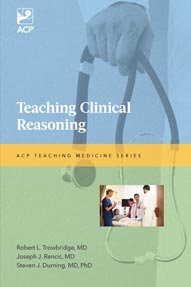Screening for PTSD after life-threatening medical events
Internists are in position to screen for and spot signs of post-traumatic stress disorder following life-threatening medical events such as heart attack and stroke. Yet this is not always part of usual care.
Because primary care physicians see their patients as part of follow-up care after acute, life-threatening medical events such as heart attack and stroke, they are in an excellent position to screen for and spot signs of post-traumatic stress disorder (PTSD). Yet this is not often part of usual care, according to some experts.
“The data support that after any life-threatening event, there are increased rates of PTSD, whether the patient was seen at a trauma center or emergency room or spent time in the ICU,” said Robert J. Ursano, MD, professor of psychiatry and neuroscience and chairman of the department of psychiatry at the Uniformed Services University in Bethesda, Md. “If we knew there were increased rates of tuberculosis after these events, we'd be all over it. But with PTSD, we're not as proactive as we can be.”

A meta-analysis published in June 2012 by the online peer-reviewed journal PLoS One suggested that 12% of patients with acute coronary syndromes (ACS) develop clinically significant symptoms of PTSD. A meta-analysis appearing in PLoS One a year later suggested that 23% of patients with stroke or transient ischemic attacks (TIAs) have symptoms of PTSD within the following year, and 11% l have symptoms beyond a year.
Furthermore, the likelihood of developing PTSD after such acute events has more to do with a patient's perception of the event than with the physical severity of the event itself, said Donald Edmondson, PhD, assistant professor of behavioral medicine at Columbia University in New York and an author on both PLoS One papers. “The objective severity of cardiovascular events like ACS is much less strongly associated with PTSD than the subjective severity of the events,” he noted.
That's where the need for screening can go unfulfilled, said Ian Kronish, MD, assistant professor of medicine in the Center for Behavioral Cardiovascular Health at Columbia University and 1 of Dr. Edmondson's coauthors on the paper about stroke and TIAs. “Internists can see hundreds of these patients every day, but we can forget that this is a major life-changing event for them and they can go on to have a range of psychiatric symptoms that include symptoms of PTSD.”
There is an association between implantable cardioverter-defibrillators (ICDs) and PTSD, as well. A paper in the January 29, 2013, Circulation noted that 20% of patients who have ICDs have significant PTSD symptoms.
“These devices work by delivering a shock. Patients have described it as a strong kick to the chest. That can be stressful and trigger PTSD, particularly if the patient already has a history of PTSD,” said Deepak L. Bhatt, MD, MPH, FACP, executive director of interventional cardiovascular programs at Brigham and Women's Hospital and Vascular Center and professor of medicine at Harvard Medical School in Boston.
Therefore, internists who provide follow-up care to patients who have had cardiac arrest should be aware of their risk of developing PTSD, Dr. Bhatt added. “From the internist's perspective, medically the patient may have been a great ICD candidate, but then when you put the device in, the patient then goes on to develop PTSD symptoms.”
Screening
It's normal for patients to experience emotional upheaval immediately after medical events that they perceive as life-threatening, but if it continues or they seem preoccupied after about a week or so, it's time to screen for PTSD, said Jeffrey P. Staab, MD, MS, associate professor of psychiatry and director of the Fellowship in Psychosomatic Medicine in the Department of Psychiatry and Psychology at Mayo Clinic in Rochester, Minn.
“Probably the best predictor of risk is not the immediate response, like if the patient was just in the ER overnight and discharged in the morning, but instead if the patient is intensely preoccupied with the event 5, 7, or 10 days later,” said Dr. Staab. “If the patient is reliving the event or experiencing a feeling of imminent danger, and the patient's life is still revolving around it after the first week or 2, that should be a primary alert.”
The longer symptoms persist, the higher the red flag should go, said Dr. Ursano. “Nearly everyone will have some reactions early on, but we look for recovery by 1 month, and certainly by 3 months.”
Some screening tools may be more useful than others. According to a paper appearing in the Aug. 4, 2015, Journal of the American Medical Association, researchers who reviewed 23 cohort studies that evaluated 15 screening instruments for PTSD found 2 tools to be particularly effective, the 4-item Primary Care PTSD Screen and the 17-item PTSD Checklist for DSM-IV (this checklist was updated with a 20-item list in accordance with DSM-5.
Dr. Edmondson noted the simplicity of the shorter, 4-item PC-PTSD. “It's not specifically about a medical event, but it performs very well compared to more involved questionnaires. It asks about cardinal symptoms patients with PTSD may have: whether they've had nightmares; tried hard not to think about the event and gone out of their way to avoid situations that reminded them of it; were constantly on guard; or felt numb or detached from their surroundings, the things they usually do, and other people.”
Whichever screening tool an internist chooses, the most important thing is to bring the topic up, said Dr. Staab. “You can say, ‘Hey, you've just been through something really tough and it seems to have thrown you off.’ Let patients know you see how affected they are by what happened, and let them know you want to help them with it.”
Even with screening, there may be cases where it's tough to tease out whether a patient's reaction to the medical event indicates a risk for PTSD, said Dr. Bhatt. “The distinction between PTSD and the usual kinds of reactions can be subtle. There can be a certain amount of downscaling in activity that is [medically] appropriate for a certain amount of time, so the patient's own reaction may not be so obvious.”
His advice is to talk to the patient's family. “They can give you a sense of what is going on at home and whether symptoms are improving or worse than before,” he said.
Dr. Ursano agreed and noted that the family may be able to provide insight about other stress behaviors that often go hand in hand with PTSD. “There can be an increase in smoking, drinking, substance abuse, or driving recklessly,” he said.
One symptom of PTSD can throw a wrench into the entire process: avoidance, particularly if the patient believes that the traumatic event was caused by a physician or other clinician.
“If the patient believes the medical situation was the result of an error or human negligence, there is a potentially higher risk for PTSD,” said Dr. Staab. “And sometimes people just shut down as a coping strategy. It's not a very good strategy, but it's a strategy, and they may feel they have no other way.”
In such cases, patients may not seek out the follow-up care they need, said Dr. Edmondson. “Ironically, these avoidant behaviors can stem from the things we ask patients to do. We might be asking our patients to rearrange their lives around the event to take medications or get care, and these behaviors are often potent reminders of the event. Patients can be unconsciously motivated not to engage in these behaviors we're asking of them.”
Transitions of care can also cause difficulties. If electronic medical records are not integrated or set up to receive alerts about patients when they are admitted to the hospital, an internist may not learn of potentially triggering medical events until a patient comes in a few months later for a routine visit.
The solution is to ask about the patient's life at various touchpoints in health care delivery, said Dr. Ursano. “When patients come in for a physical, a scrip refill, or if their kids need physicals for school, you can ask how things are and if there have been any serious events since the last time you saw them,” he said.
Making the referral
Internists who feel their patients may be at risk for developing PTSD or have symptoms of PTSD should offer to refer their patients to mental health professionals, but they should not feel like they have to compel their patients to take them up on the offer, said Dr. Staab.
“Don't feel like you have to twist your patient's arm. We know there can be a short delay, meaning over several weeks, where the patient can get treatment later and the outcomes are just as good,” Dr. Staab said. “Plant the seed, and bring it up again when the patient returns for the next follow-up visit, after the patient has had a chance to think about it.”
One possible exception to this would be the patient who had a stroke or TIA, said Dr. Kronish. “Adherence to aspirin or anticoagulation therapy is important, so if PTSD or other disorders are affecting their self-care, you'd want to know about that and get them help for it.”
Dr. Edmondson stressed the importance of working with the patient. “Think about ways to plan for engaging in behaviors like medication adherence or seeing a mental health professional. Ask the patient how you can plan for issues that may come up. Talking with your patients is always a good thing.”




